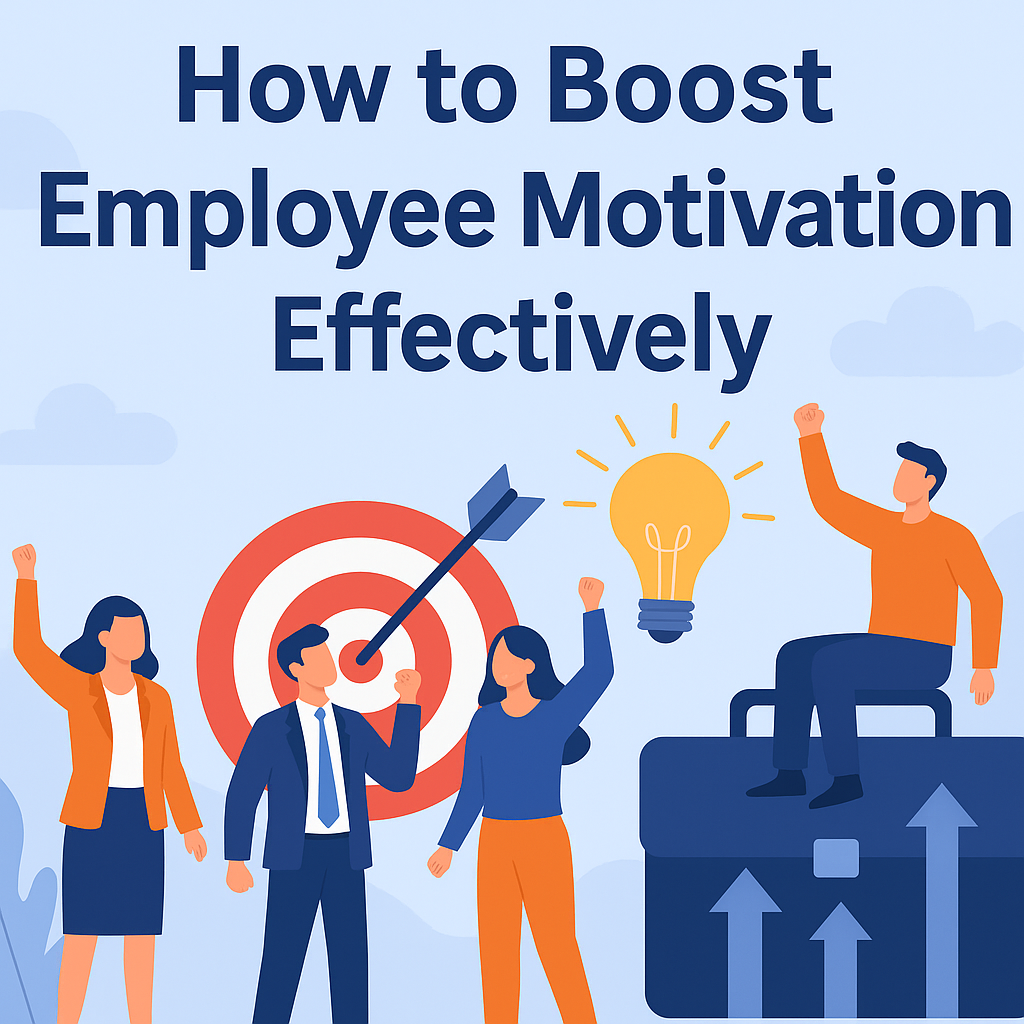How To Boost Employee Motivation Effectively
UncategorizedIntroduction
Understanding how to Boost Employee Motivation Effectively is crucial for business success. My current workplace provides stable but monotonous roles, leading to moderate levels of motivation. This blog explores strategies to boost employee motivation, manage team dynamics, and resolve role ambiguity. We’ll incorporate proven theories to help businesses create more engaging and productive work environments.
Redesigning Roles to Boost Employee Motivation Effectively
Currently, my job involves isolated office work with limited interaction, contributing to moderate motivation. To boost employee motivation, I propose expanding business operations to tackle more complex and higher-volume tasks. More challenging roles offer employees opportunities for growth, driving motivation and productivity.
However, a small business environment complicates this effort. The owner’s tight control limits autonomy. Establishing an HR department to manage feedback and performance reviews could significantly boost employee motivation by providing clear expectations and regular evaluations.
Feedback and Reward Systems to Boost Employee Motivation Effectively
Effective feedback and rewards are vital to boosting employee motivation. Feedback should be timely, clear, and constructive, guiding employees toward success. Reward systems must directly tie performance to incentives, reinforcing effort and achievement.
Equity Theory supports fairness across the organization, essential for boosting employee motivation. Employees naturally compare their treatment with colleagues, so transparency and fairness are vital. Expectancy Theory reinforces that employees are motivated when they believe their efforts yield valuable outcomes. Clear reward structures support this belief, enhancing motivation and performance.
Intrinsic and Extrinsic Factors in Boosting Employee Motivation
While managers can foster motivation, genuine motivation often arises internally. Aligning personal goals with organizational objectives significantly impacts motivation levels. Managers must recognize and harness personal motivations to boost employee motivation effectively.
Goal setting positively influences both interpersonal relationships and organizational outcomes. Clear goals empower individuals and teams, driving overall performance. Conscious organizational culture further supports motivation by aligning personal and organizational goals, creating environments conducive to intrinsic motivation.
Transitioning Groups to Teams to Boost Employee Motivation Effectively
Groups differ from teams primarily due to their collective objectives. My current workplace illustrates limited team dynamics, with independent tasks reducing productivity.
To transform groups into cohesive teams and boost employee motivation effectively, cross-training and regular meetings are essential. Cross-training helps employees understand overall processes, facilitating better collaboration. Regular meetings encourage communication, enhancing team cohesion and moving groups toward optimal performance.
Addressing Role Ambiguity and Conflict to Boost Employee Motivation
Role ambiguity and conflict significantly impact motivation. In my current role, unclear expectations result in ambiguity, reducing productivity and morale. Clearly defined job responsibilities can alleviate ambiguity, ensuring employees understand expectations.
Previously experienced role conflict arises from conflicting job expectations. Clear communication and structured management effectively mitigate these issues. Businesses should proactively manage roles and expectations to maintain high motivation levels.
Conclusion
Redesigning roles, clarifying expectations, and promoting effective team dynamics significantly boost employee motivation effectively. Implementing principles from Equity Theory, Expectancy Theory, Maslow’s hierarchy, and ERG theory provides valuable frameworks. Understanding intrinsic motivations, clear goal-setting, and a conscious organizational culture further ensures sustained motivation and productivity.
